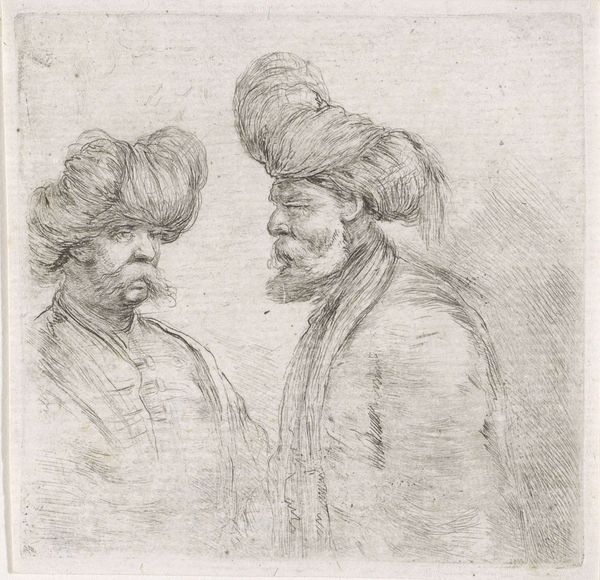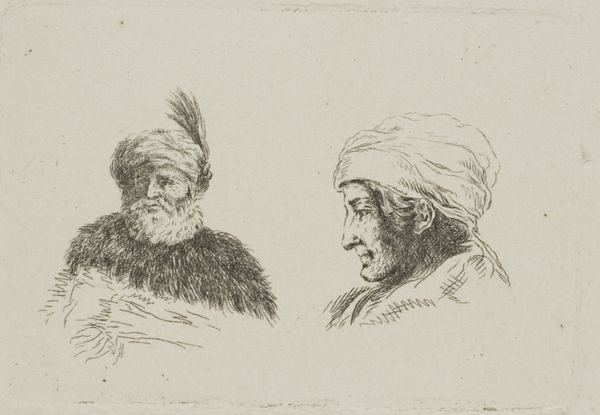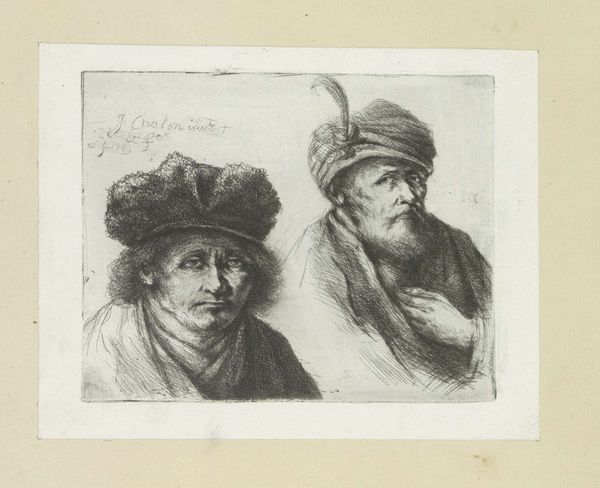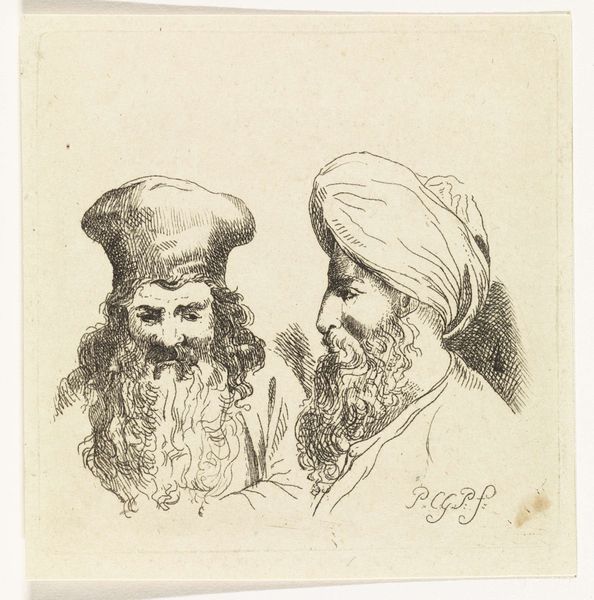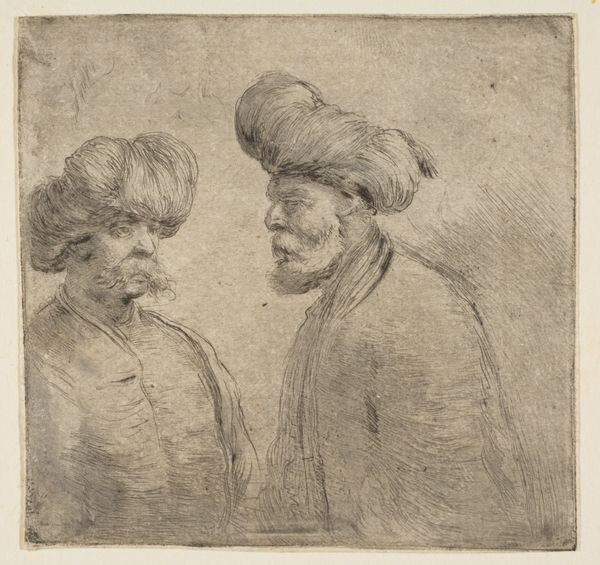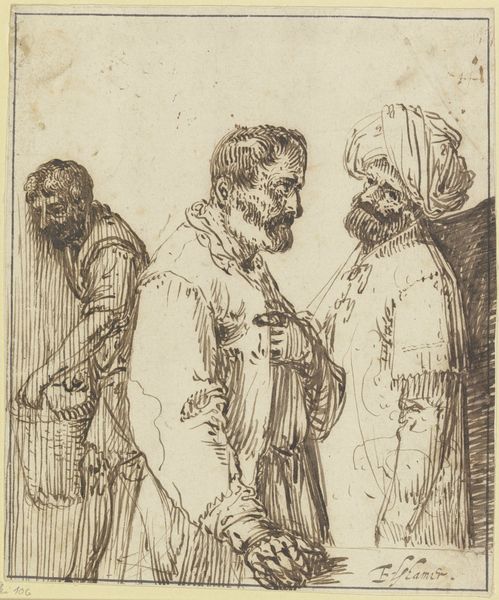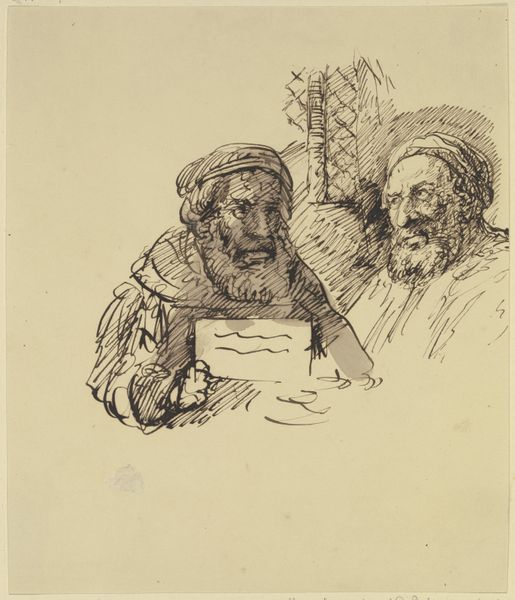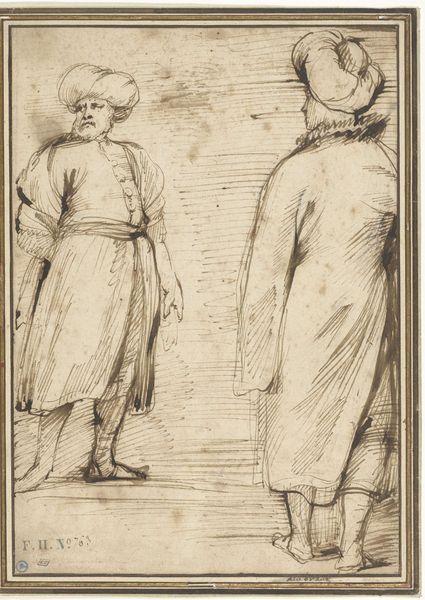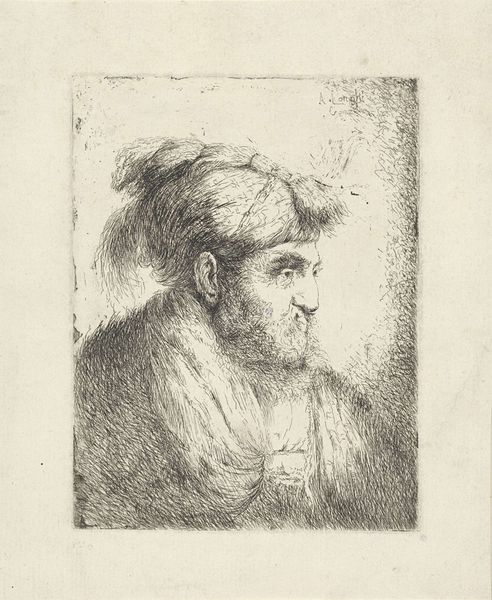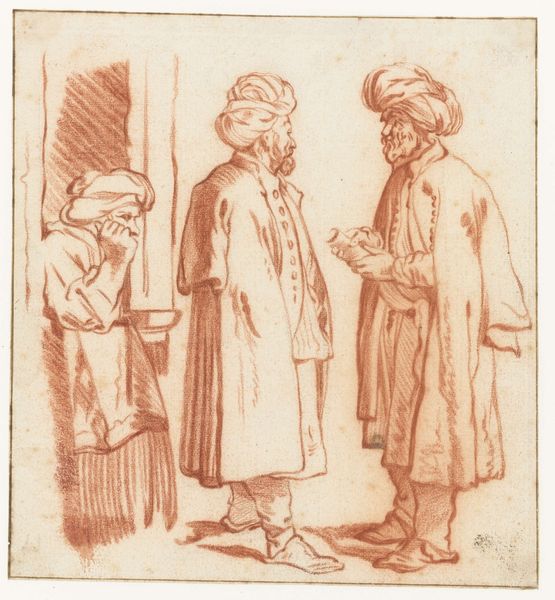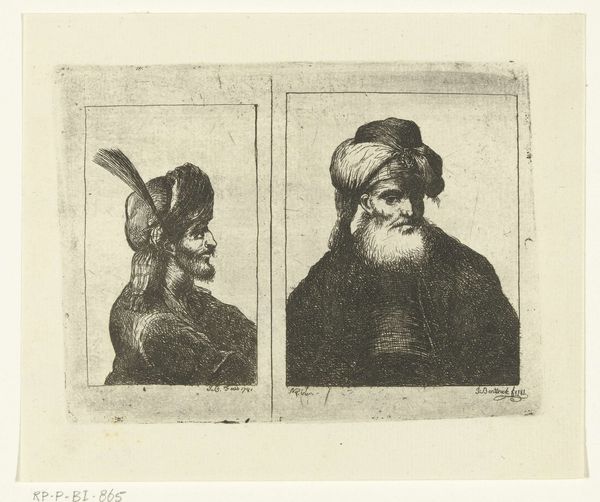
drawing, paper, ink
#
portrait
#
drawing
#
figuration
#
paper
#
ink
#
romanticism
#
orientalism
Dimensions: height 72 mm, width 92 mm
Copyright: Rijks Museum: Open Domain
Curator: We’re looking at Ernst Willem Jan Bagelaar’s “Portret van twee mannen met tulband,” made sometime between 1798 and 1837. It's an ink drawing on paper depicting two turbaned men. Editor: The loose linework gives it an almost sketch-like feel, but the details in their faces are quite striking. Given its age, what can you tell me about the materials themselves, and how that informs our understanding of the piece? Curator: From a materialist perspective, we must consider the availability and production of paper and ink during this period. The paper's quality reveals clues about Bagelaar's economic status and the resources at his disposal. The ink, too – its composition and how it interacts with the paper – speaks to the artist's technical skill and knowledge of his craft. Did Bagelaar make the ink himself, or was it store bought? How did access to certain pigments play into orientalist depictions of people of color at the time? Editor: That’s fascinating! I hadn’t thought about how the choice of materials could be tied to the artist’s context like that. The "orientalism" tag makes me wonder too - were depictions of turbans in art and culture often symbolic of colonial power structures and resource extraction at the time? Curator: Exactly. How did trade routes impact artistic choices in that era? Consider also that paper, during the late 18th and early 19th centuries, was becoming more readily available, influencing the proliferation of drawing as a medium. Its function as a preliminary sketch for painting, or an artistic end product? These economic factors deeply shaped Bagelaar’s creative practice, whether consciously or not. Editor: I see, the means of production are intertwined with the artistic value. Curator: Precisely. The materiality speaks to the labour, industry and economic networks of the time. I would love to learn more about what these gentlemen would have to say about being represented on that kind of paper by this artist! Editor: Thinking about this drawing as a product of its time makes it so much more compelling. Thanks! Curator: Likewise. Materiality invites us to move beyond the aesthetic appreciation and ask crucial questions about production, access, and labor.
Comments
No comments
Be the first to comment and join the conversation on the ultimate creative platform.
